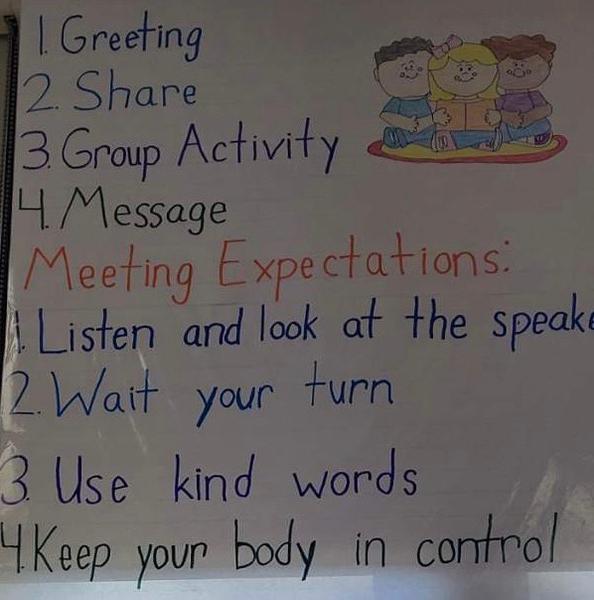

Morning Meetings are a special, integral part of the daily schedule. During my student teaching experience, I began the “afternoon meeting” in place of a morning meeting (due to schedule conflicts). This was a time to encourage connections between students, emphasize lessons that were taught that day, give my students a voice and make learning fun. Our meetings were broken into four parts, which I will break down below.
Students go around the circle and greet one another by first name. “Good afternoon, Sara.” Students were told to speak loudly, make eye contact during the greeting, and not look away from one another while they were being greeted.
During the share portion of the meeting, four students answer a question written by me. All students in the circle were required to ask at least one question or comment during the share. I created boards and tokens to manage this system. The presenters each had a board, with a set number of blank circles to indicate how many questions/comments they could accept. Each student in the circle was given one token. If you already spent your token and asked a question, you are not allowed to raise your hand again. The presenter would answer the initial share question and then say, “I am ready for questions and comments”. They would then call on students who raise their hands, and collect their tokens. The share portion of the meeting encourages students to listen to one another, be patient and take turns.
The group activity is an activity used to encouraged group collaboration, teamwork and communication. Students had to work together during these activities.
Everyday, I wrote a message that one student would read to the class. “Good afternoon. Today is Monday, December 12th, 2022.” I sometimes include a fun fact we learned throughout the day, or a reminder about something for tomorrow. At the end of my message, I always included a joke of the day. These jokes were written by students in the class, so when it was time to share their joke, they were allowed to stand up and tell it to the class. We had a rule that even if a joke was not funny, we all had to laugh to support the person who told the joke. The message portion of the meeting encouraged students to practice their reading skills and to support one another.